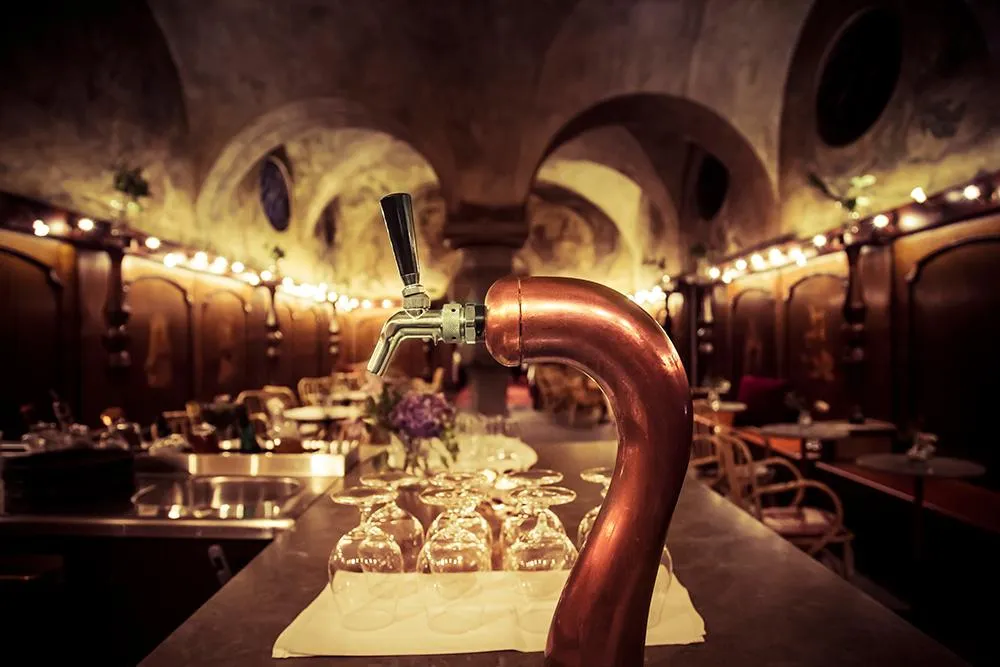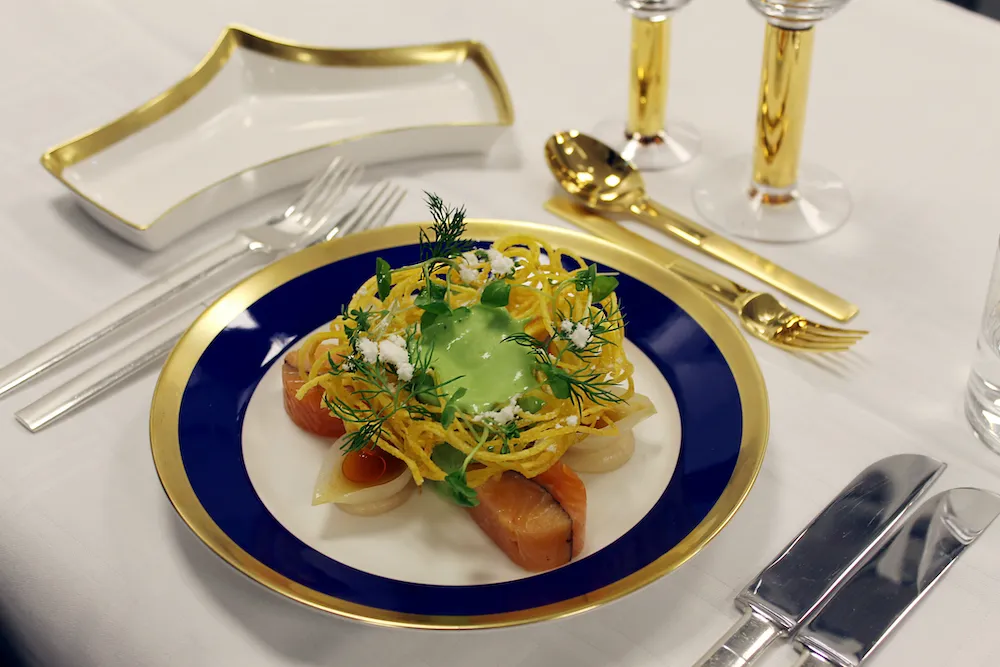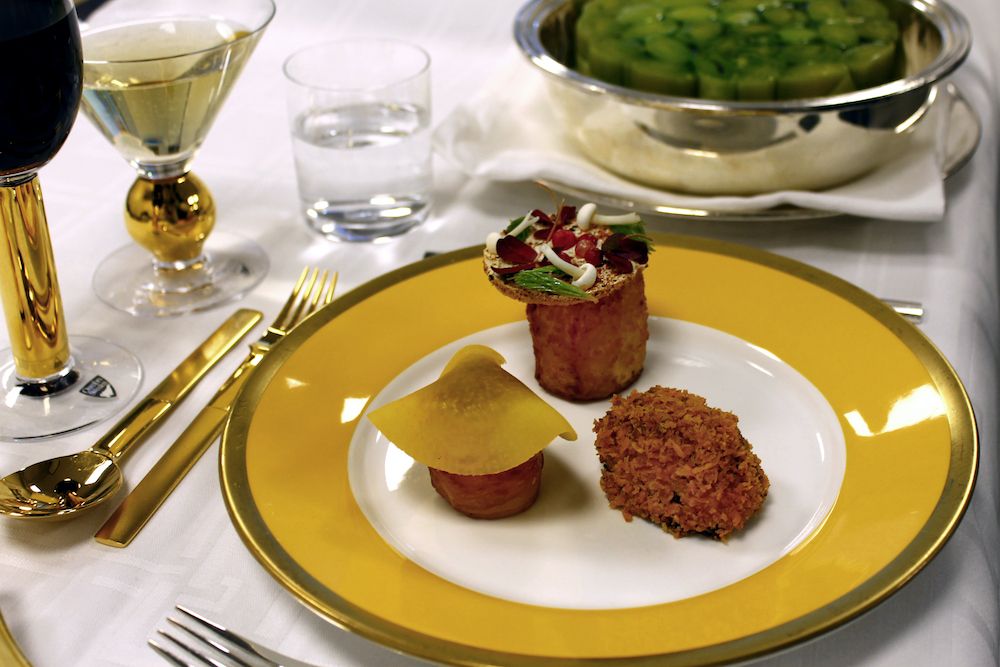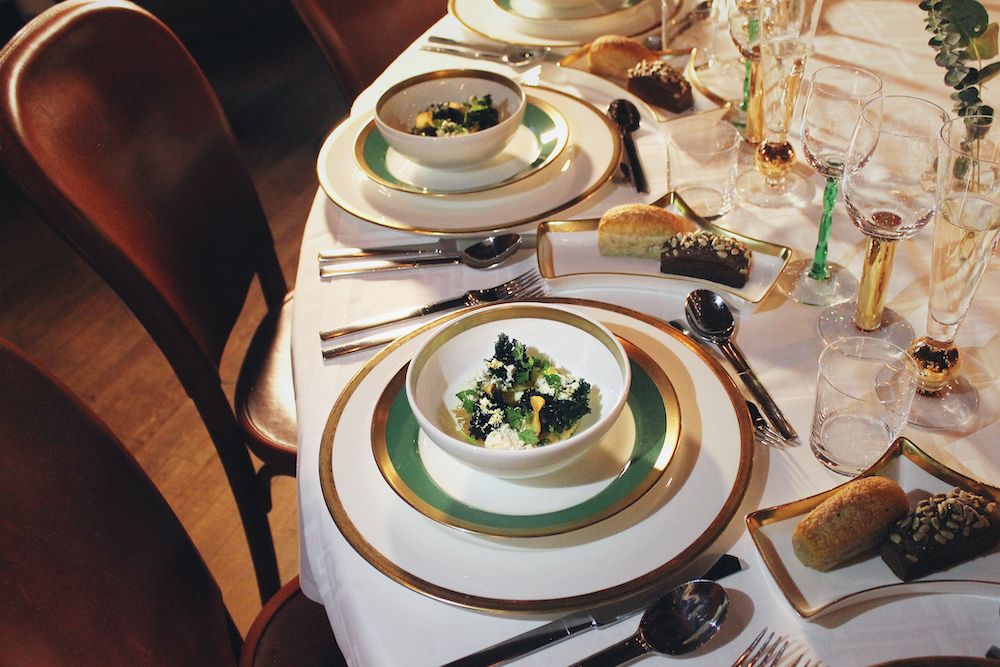This Restaurant in Sweden Offers Every Meal Served at the Nobel Banquet Since 1922
At Stadshuskällaren, in the basement of Stockholm’s City Hall, diners eat like Nobel Prize winners
/https://tf-cmsv2-smithsonianmag-media.s3.amazonaws.com/filer/e6/4a/e64a6d62-b71f-4f13-98f6-178d7bcf62b8/stadshuskallaren_dining_room.jpg)
The Nobel Banquet, an annual celebration that recognizes the academic, cultural and scientific achievements of that year’s respective Nobel Laureates, is a prestigious event, held every December 10, that the general public will never get the honor to attend. Fortunately, that doesn’t mean that the rest of us can’t take part in some of the festivities experienced by Nobel Prize winners and their guests.
For the past 15 years, Stadshuskällaren, or City Hall Cellars—a Swedish restaurant tucked away in the basement of Stockholm’s towering City Hall has been serving every single menu served during the Nobel Banquet from 1922 to today. (The banquet itself is held inside City Hall's Blue Hall.) And with a reservation, diners can feast on the same multi-course menus as previous prize winners, from Sir Alexander Fleming who won in 1945 to Martin Luther King, Jr. in 1964 to Mother Teresa in 1979. (They dined on reindeer, foie gras and veal, respectively.)
“The Nobel Banquet is a celebration that’s known worldwide, so we thought it would be a good idea to let everyone have the opportunity to enjoy the menus and taste what it’s like,” says Maria Stridh, co-owner and CEO of Stadshuskällaren. “It’s a fun thing to do if you’re traveling from another country and want to try something special that’s related to Sweden. Often people will select a certain year that’s important to them, such as the year that they were born or the year when someone from their country won the prize.”
While Stridh says that no one particular year proves to be more popular amongst diners than another, she does confirm that there’s often an uptick in requests to sample the menu from the previous year’s Nobel Banquet. (The restaurant is currently offering the 2018 menu, a feast that includes arctic char bathed in crayfish broth, baked celeriac drizzled in chanterelle cream and an apple medley. The menu for the 2019 celebration, which will take place tomorrow, will be available to order early next year.)
“Some of the earliest menus available have dishes that might not be quite so popular with guests today, like turtle soup,” she says. “And some of the menus from the 1960s had chicken as an entrée, which is no longer considered a special occasion dish these days.”
But despite the choice of ingredients, the team of chefs responsible for recreating the dishes are adamant about ensuring that they’re as close in taste and appearance as they were the first time they were served. To make the experience as authentic as possible, the restaurant serves meals using gold-rimmed porcelain that are the same as the sets used during the banquet. Each meal can also come with wine pairings that are as close in flavor as those served for that specific year.
“Some of the wines served over the years would be too expensive to serve today,” she says, “so we try to find ones with the same character and grapes that are suitable flavor pairings to the food.”
While replicating the meals can often prove challenging—for menus that are older than the previous year, Stridh requests that guests give the restaurant at least a week's notice before their reservation to ensure that the kitchen can gather all of the necessary ingredients. Because the restaurant also serves a regular dinner menu each night, there are two kitchens that handle meal service, one of which focuses solely on meals off the historic banquet menu. The kitchen accommodates any menu that was created for a banquet held between 1922 and today. (If you want to enjoy the same meal Albert Einstein did during his win, you're out of luck, since he received the prize in 1921.) Stridh estimates that 2,000 diners come to the restaurant each year to sample a meal off the historic menu selection. While single diners can partake in the most recent menu, she says that for older menus, parties must contain at least 10 people, and that in the past, the restaurant has accommodated parties of up to 80. The price for a multi-course meal varies depending on the year, but the 2018 menu, which is the most affordable option, is about 1,795 krona (approximately $200).

Creating a new menu each year for the banquet is an undertaking in and of itself. The task takes about a year of preparation and involves a team of consulting chefs who work closely with Stridh and her staff along with members of the Nobel Foundation, the institution that has been managing the Nobel Prize since the inaugural event took place in 1901. Chef Fredrik Eriksson has been working with the Nobel Foundation for the last 15 years to design the menus for the Nobel Banquet. The process is extensive and involves multiple revisions and several formal tastings. Not only does he and his team have to create a multi-course meal that will serve more than 1,000 guests during a single meal service, but he also has to take into consideration dietary restrictions and the availability of ingredients, since the kitchen designs the menu during the spring but has to keep in mind what produce will be available during the colder months when the banquet takes place.
“We work closely with farmers in Sweden and try to ensure that the menu is as sustainable as possible by using local ingredients,” Eriksson says. “We also have sommeliers who create wine pairings and a team of pastry chefs who create desserts that will complement the dinner.”
It’s Eriksson’s job to ensure that not a single aspect of the menu is overlooked, because not only is he creating a meal that will be savored by some of the world’s most distinguished luminaries, but it will also become part of a growing compendium of meals for diners to enjoy for many years to come.
Planning Your Next Trip?
Explore great travel deals
Smithsonian magazine participates in affiliate link advertising programs. If you purchase an item through these links, we receive a commission.




